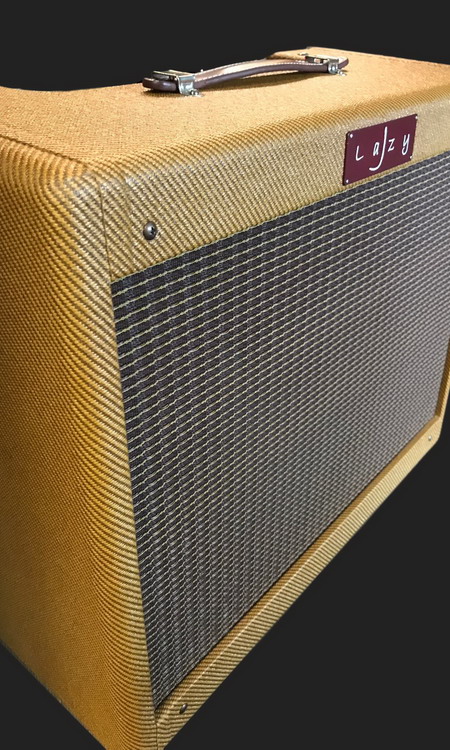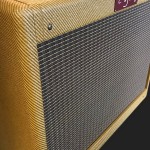Over the years, I have built quite a few amps, one offs, to order, and it never crossed my mind to start building amps for a living. The reason for that was that, not too long ago, building an amp by hand, because of the time involved, would inevitably price it in the same region as most vintage amps… and being a vintage nut myself, I always thought that, given the choice between a vintage or a boutique amp, most people would always go for the vintage/collectable.
Well, that seems to have changed now, as virtually all of the vintage equipment has moved into a league of its own as far as the price goes.
On top of that, vintage amps have become a bit of a Catch 22 for most players. They’re really expensive, and they really need attention…which means replacing bad caps, resistors, transformers, etc… and ultimately reducing their collectable value.
That now leaves hand built amps as a really viable option for a lot of players.
Hand built, new amps, fall in the same category in terms of build quality and attention to detail as their vintage counter parts…but at a much more affordable price. Beyond that, they can be tailored to a players needs without worrying about ruining the collectable value of a 40-50 year old amp. You can add reverb, tremolo, channel switching… the world’s your oyster.
Also, since modern mass production techniques are usually cost driven, one often finds that corners are cut in the quality of the parts that are used as well as the production process…’good enough’ is often sufficient. Conversely, when you build amps by hand, you can choose to do better than that. You can choose to make things better than they have to be…
As I said before, because of the time it takes, and the attention to detail involved, anything that is built by hand is going to be somewhat more expensive than a mass produced equivalent… but it should reward you with something unique, both in terms of character and reliability.
At Lazy J we will always keep that in mind!
The Lazy J 20
…is based on a late 50s classic that has helped define the voice of Rock & Roll.
This amp is a 2 channel, hand build, point to point wired amp, which delivers ca. 18 Watts into a 12”, 8 Ohm, Celestion Alnico Blue Speaker. The cabinet is built from finger jointed pine and covered with hand aged, lacquered tweed.
The 2 channels are marked Normal and Bright with a Volume control for each one. The Tone control affects both channels equally.
Looking at the 4 inputs from the back of the amp, the 2 on the right are for the Normal Channel and the 2 on the left are for the Bright Channel.
Both inputs labeled 1 are higher gain than the ones labeled 2.
The interesting thing is that the both Volume controls are interactive. The Volume of the Channel you’re not plugged into has an effect on the tone/tightness of the Channel you are plugged into. In other words, if your guitar is plugged into the Bright Channel, the Normal Channel Volume affects the way the Bright Channel responds. This is subtle, but definitely audible. With the Bright Volume turned up to any given setting, and the Normal Volume off, you hear the sound of the Bright Channel alone…by turning the Normal Channel up about halfway, you hear an increase in low mids. By turning the Normal Volume up to 10, the bottom end will tighten up…from 10 – 12 the sound will get choked, compressed and become quieter. This can be used to get interesting tonal variations from the amp.
The amp is set up with a GZ34 rectifier and a pair of 6L6s in the power amp, and uses two 12AX7s. However, for a different feel and character, the amp will take a 5Y3 rectifier and a pair of 6V6s without the need of re-biasing.
An optional feature that can be added to the amp in place of the Ground Switch, is a Variable Attenuation Control (VAC), which allows the user to dial seamlessly from full output down to ca. 5 Watts while retaining the amps character all the way along.
Upon request, a Lazy J Reverb module can be added to the amp. It is a tube driven reverb circuit with a full size reverb tank, adding another dimension to the amp. The reverb circuitry and controls are housed in a small enclosure that is mounted to the inside of the cabinet, on the right hand side, looking at the amp from the back. The controls, Reverb Volume and Reverb Tone, are easily accessible.
The module is supplied with a Cut Off footswitch.
Variable Attenuation Control (VAC)
This circuit allows the user to reduce the Output of the amp in an even sweep from Full Power down to less than 5 Watts. However, this is not a Master Volume.
This circuit retains the amps tone and response while reducing its Output Volume.
In other words, you turn your amp up to get the tone you want… which might make it too loud for certain situations. Now you can turn the amp down with the VAC to exactly the level you need…while retaining all the character and response of your sound.
This circuit is an optional feature on the Lazy J 20.
However, it can be retro-fitted to most amps under 40 Watts.



